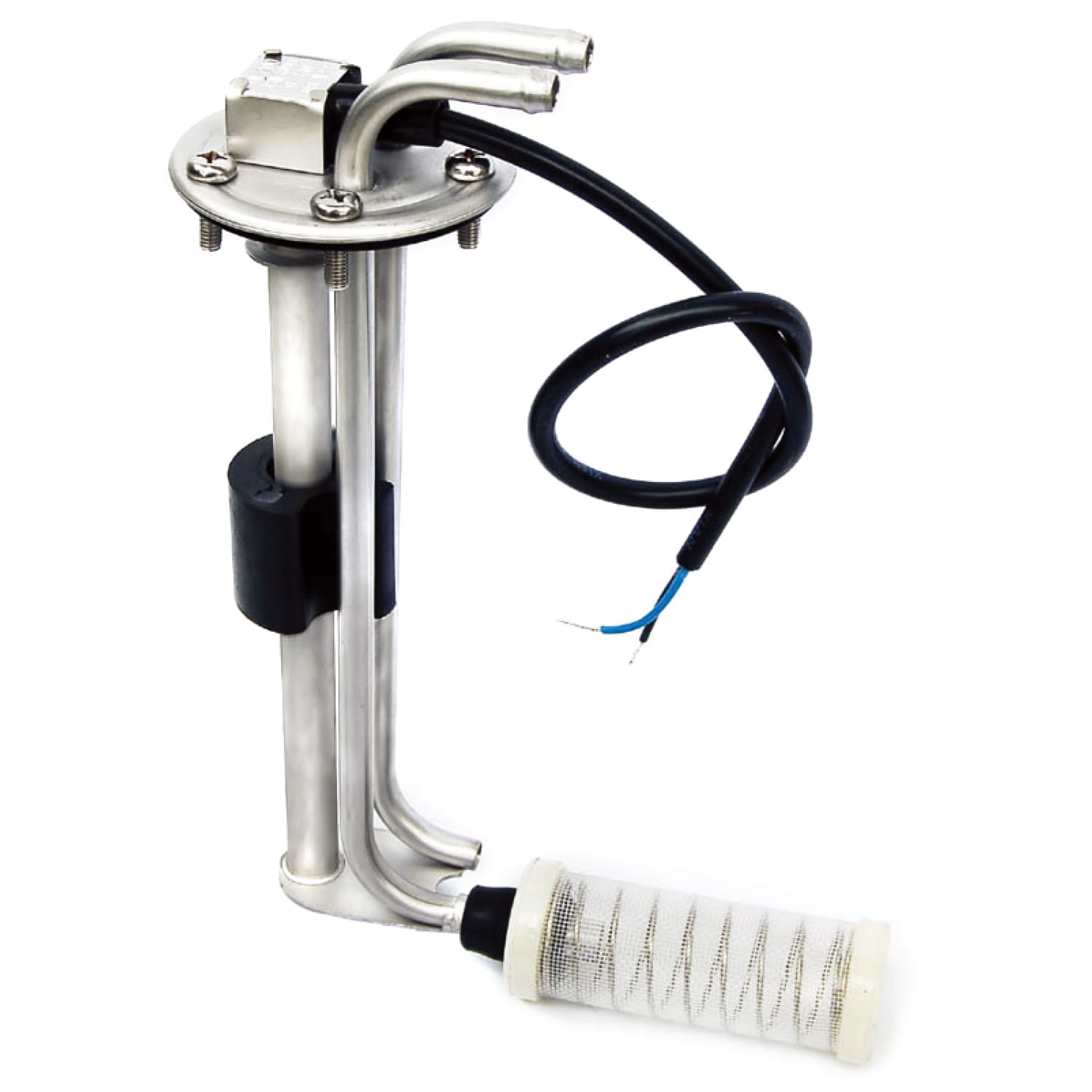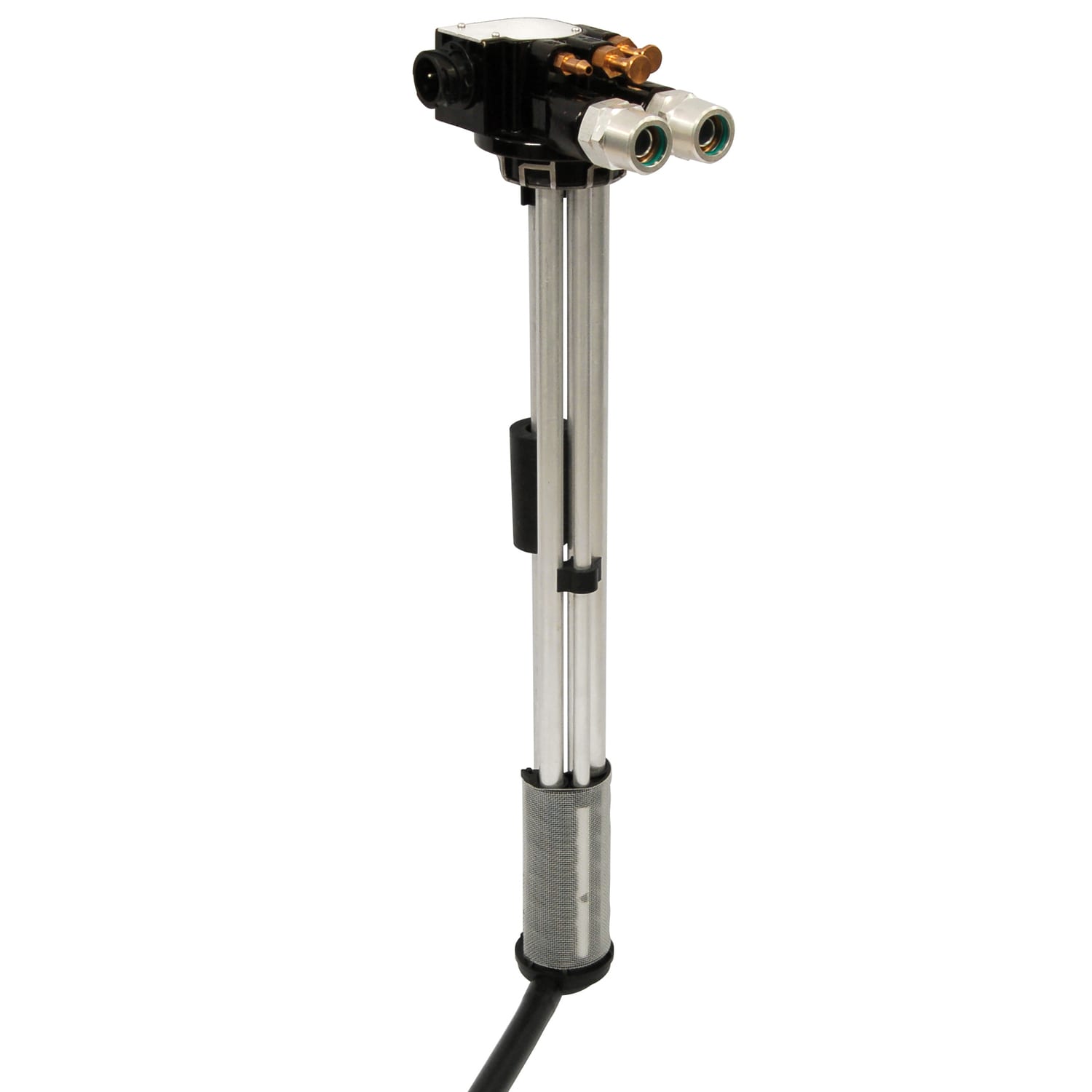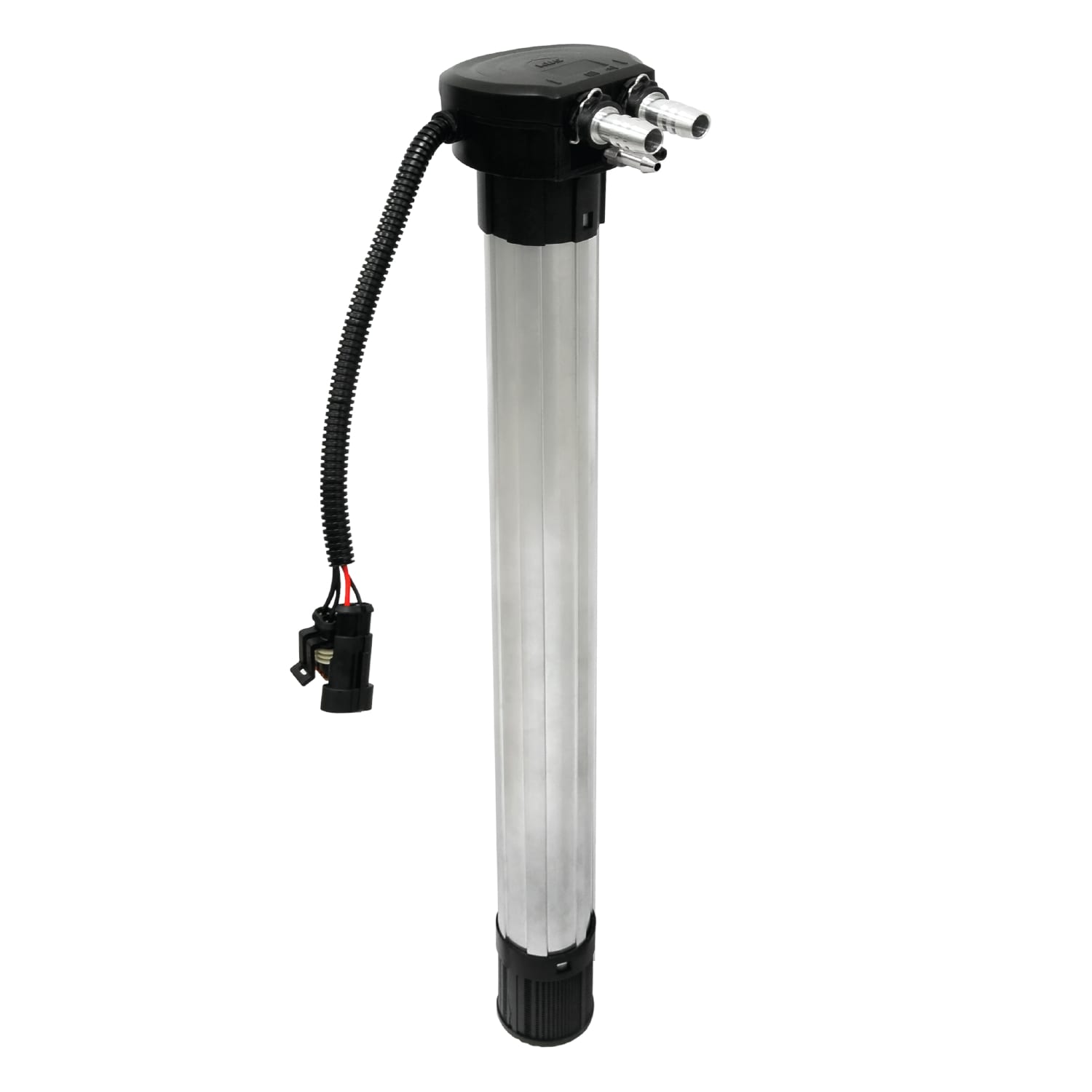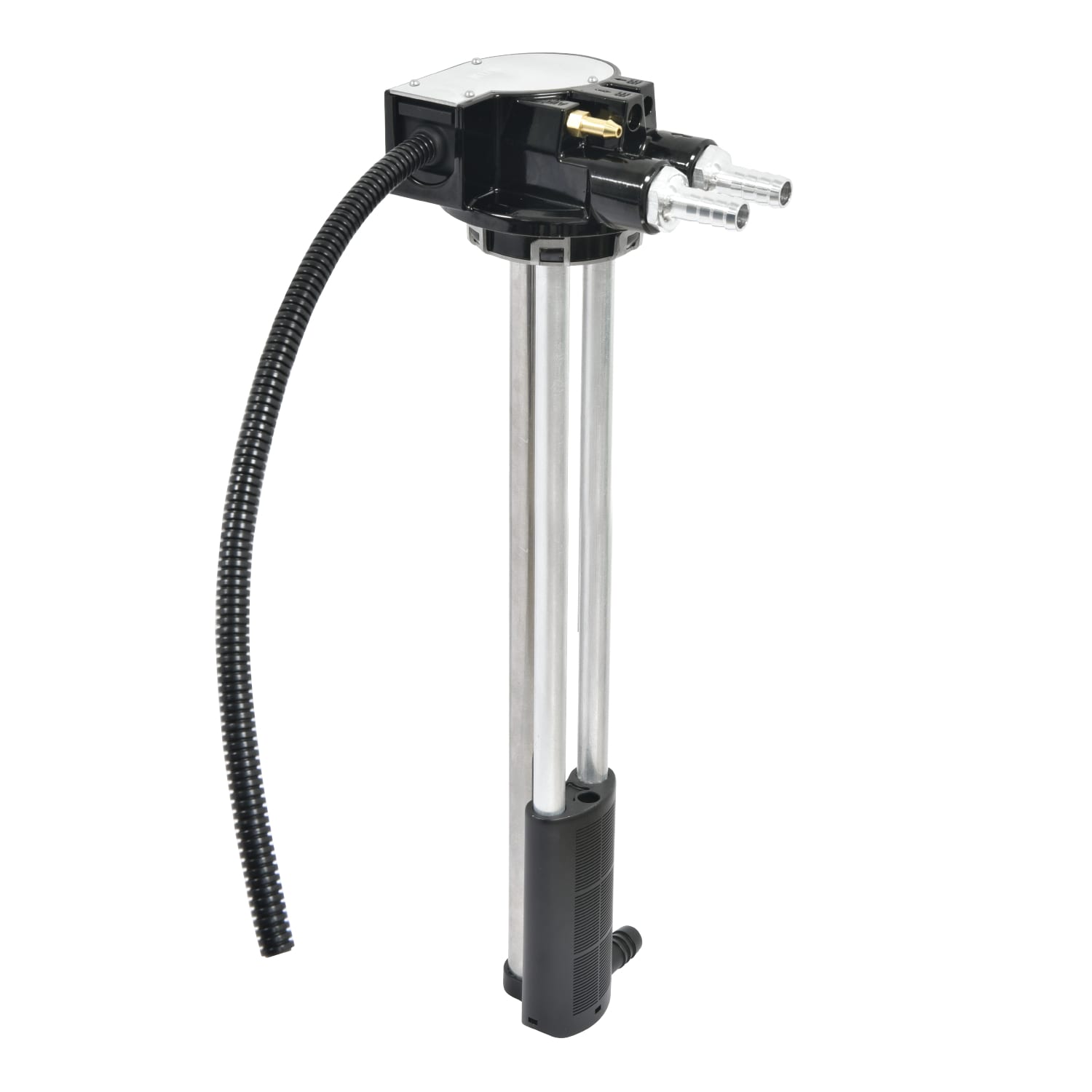Multi-function level senders are essential components in modern commercial vehicles and industrial applications. They provide accurate fuel level measurement and additional functionalities that enhance performance and safety. KUS, a leading manufacturer of these advanced sensors, offers robust solutions trusted by OEMs worldwide.
Here, we break down in detail the benefits of opting for a multi-function level sender over a standard level sender so that you can make the most accurate and calculated decision for you and your company.
Features
The main difference between a multi-function level sender and a standard level sender is that a standard level sender only measures the liquid level inside the tank while a multi-function sender not only reads the liquid level inside the tank but can also be fully customizable to include a suction and return tube, an air vent pipe, and a filter. The pipe diameter sizes, suction, return, air vent fittings, and mounting styles are available in many options.
Centralization
By keeping everything centralized, you will not need a separate fitting on the top of the tank for the suction and return tubes. This is not only inherently cheaper but also lessens the chance of possible leakage points and, thus, the repairs and costs associated with those repairs.
Based on the tank sender location, the pipes on the top and bottom can be orientated to face almost any direction you may need to maximize fuel flow and ensure the suction and return tube orientation inside the tank does not interfere with the sides of the tank or baffles.
Like a standard unit, you can also include a switch inside the sender. When connected to a buzzer or LED light, this switch can indicate an audible or visual warning, letting you know your tank is becoming too low or starting to become full so you don’t accidentally experience overfill.
Depending on your output needs you can have the sender calibrated with almost any resistance reading, voltage, or milliamp output. For those that have an odd shaped tank, you can request the sender to be calibrated to the shape of the tank so the sending unit output reads correctly at the empty, quarter, half, three quarter, and full mark.
Associated Cost
The benefits of a multi-function level sender go far beyond the initial customization and calibration. As a purchaser, the integrations the multi-function level sender offers lead to savings in labor and parts, which make the unit substantially more desirable than a standard level sender. These savings are then passed along to the customer to create a more price-competitive product.
Vertical Integration
KUS will typically work closely with customer engineers to ensure the multi-function level sender can be best integrated into the tank the customers are using. We can help to optimize tank design to integrate the fuel level senders, or we can work with the tank boundary constraints to come up with a fuel level sender design that works best for your working application.
Fittings
Another benefit of choosing a multi-function level sender over a standard level sender is the fittings used in installation. Standard-level senders don’t have fittings, meaning suction and return pipes or air vents need to be sourced separately and then manually integrated into the top of the tank.
The issue with fittings from a procurement standpoint is that they can be viewed as a hidden cost as, depending on how familiar with level senders and additional components, purchasers may or may not take them into consideration when looking at the final cost of the product. This can lead to budget constraints when working with a supplier as they need to be considered before a standard level sender is purchased, opting for a multi-function level sender will save the purchaser time and money by not having to order fittings.
There’s also the stock of fittings that the OEM would have to manage to ensure that there are enough fittings for the installation of each standard-level sender. Those fittings would then have to be properly installed, which may be hidden costs not considered when originally sourcing the senders.
Different Types of Multi-Function Level Senders
TN
The TN model sender is best for light duty trucks, construction machines, and generator sets.
- Widely used in on-road, off-road vehicles, generator sets, and industrial applications
- Utilizes reed switch and magnetic field technology
- Advantage of reed switch type level sender over thick-film swing arm type level sender is the reed switch sender’s durability and reliability
- Float is the only moving part of the sender, thereby minimizing potential mechanical failure
- Integrated with fuel pick-up and return tubes for engine, and cabin heater
- Integrated venting port to allow for pressure equalization between tank and atmosphere
- Roll-over check valve
SAP
The SAP Multi-Function Level Sender model is designed specifically for buses and trucks. This model is built and tested for robust on-road and off-road conditions and integrates fuel suction and return tubes. The SAP model can output analog signals such as resistive, voltage, or mA, as well as digital signals such as CANBus or J1939.
SPEH & SAH
For the extreme cold climates there is the SPEH and SAH sender model which applies positive temperature coefficient (PTC) heating or water heating with high heating efficiency, which can control the temperature automatically and safely. Combustion efficiency can be increased by 5%, thus reducing exhaust pollution at the same time.
KAB & SADR
The KAB & SADR model has a high resolution of 1mm and not only provides the suction and return for the fuel but also a suction and return from the engine heating system balancing the pressure of the tank and the atmosphere using a temperature alarm built into the sending unit. The signal output can be setup as resistance, voltage, CAN-BUS, single edge nibble transmission (SENT), RS-232, or RS-485.
Why Choose KUS?
KUS is a renowned name in the industry known for its innovative sensor solutions. Our multi-function level senders are trusted by original equipment manufacturers (OEMs) worldwide for their quality, reliability, and performance. KUS can help you not only choose the applicable multi-function level sender, but also have it customized to meet your specific needs. Over 30 years of design and manufacturing experience means our products are tested and validated to the highest industry standards. With a focus on continuous improvement and customer satisfaction, KUS ensures that our products meet the highest standards of excellence.






